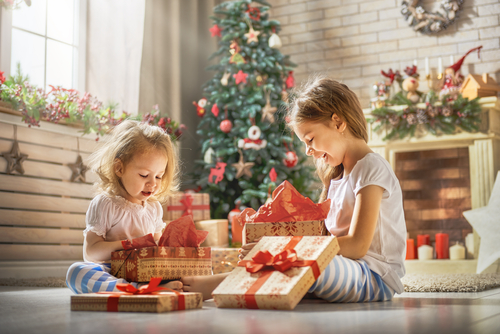Environmentalists want you to reduce waste and be more eco-friendly this Christmas
More than 500 tons of wrapping paper thrown out every year over the Christmas season, Zero Waste Canada says
It may be the most wonderful time of the year, but according to Zero Waste Canada it’s also the most wasteful.
The non-profit grassroots organization says the average Canadian family throws out 25 to 45 per cent more garbage over the holidays.
While a large bulk of it is food waste from all the holiday parties, much of it is also due to gifts.
Zero Waste Canada says 540,000 tons of wrapping paper and gifts bags are thrown out by Canadians every year over the Christmas season.
“We buy and use a lot of paper to wrap our gifts because a fun part of Christmas is unwrapping gifts,” says Vito Buonsante of Environmental Defence Canada.
While some wrapping material is recyclable, a lot of it is not.
Gift wrapping alternatives
A good alternative. Buonsante says, is using towels to wrap your presents.
“The person who receives the gift can easily find use for the towel.”
For those who choose to go the paper route, he suggests recyclable brown paper, tied up with string.
“Ribbons and bows really cannot be recycled. They will just end up in a landfill.”
So will a lot of wrapping paper, like the shiny metallic type. Some dyes that are used in gift wrap may also be too intense for recycling.
Then there’s glitter. We see it everywhere during the holidays, not only on wrapping paper, but on cards and ornaments. Buonsante says he can’t stress enough how harmful it is to the environment.
“Glitter is nothing else but micro plastics. It leeches everywhere, ends up in the environment and gets eaten by birds. It can stay around in the planet for centuries.”
Some gifts bags are also deceptive, he says, so it’s important to check they can actually be recycled.
“They seem to be paper, but it’s really plastic. It’s very difficult to tell, and we end up putting it in the blue bin.”
One way to avoid the mistake is to simply re-use the bag.
“They have durability. They can be reused year after year,” says Roger Orpin, the interim general manager of the city of Toronto’s Solid Waste Management Services.
Separating the packaging
Of course, there’s then the retail packaging itself.
A lot of gifts, especially large toys and electronics, come with a lot of bubble wrap, inflatable plastic bags and Styrofoam, which can lead to a common recycling blunder.
“Classic move would be take out your nice new present, close the box up, and throw the whole thing into the blue box,” Orpin says.
Orpin wants to remind people that separating garbage and recyclable materials is key.
Sustainability mission
The Retail Council of Canada, meanwhile, says it is actively working with its companies to ensure they are packaging their products in the most sustainable way.
The association provides a collaboration space for member retailers to share best practices, including ideas for substituting or removing excessive packaging and difficult to recycle materials.
“The primary goal of a lot of our members is so that customers, when they take their products home, they don’t have to throw away their packaging. Instead, they can responsibly recycle it,” says Andrew Telfer, the Vice President of Industry Relations and Health and Wellness.
He adds that the process is done in a methodical way.
“We take a look at the packaging that exists and ask, ‘What are the materials? How many different types of materials are there? And of those materials, what are readily recyclable within Canada?’ If a product or package material is identified as not readily recyclable, then that material is substituted, reduced or removed.”
The goal, he says, is to be more sustainable and cost effective.
“If there is a way to reduce excessive packaging, we will take that opportunity.”
That’s good news for environmentalists like Buonsante.
“We want everyone to have a happy holiday but also a green holiday.”

